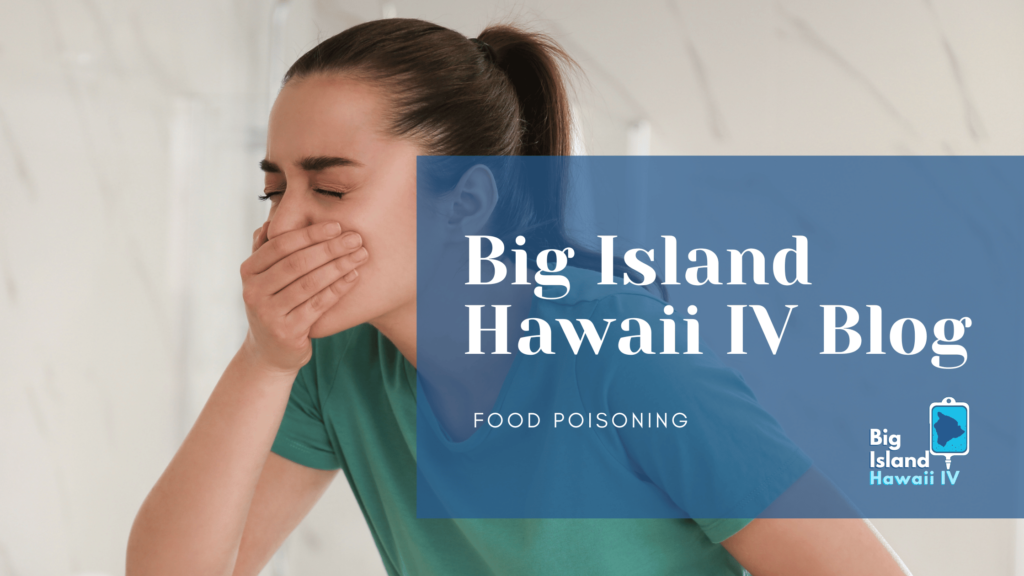Food poisoning, scientifically known as foodborne illness, is a prevalent condition resulting from the ingestion of contaminated food or water containing pathogenic microorganisms or their toxins. It is primarily caused by bacteria (e.g., Salmonella, Escherichia coli), viruses (e.g., norovirus, rotavirus), parasites, and certain toxins produced by these pathogens. The presence of these harmful agents in food disrupts normal physiological processes upon consumption, leading to a wide range of symptoms. These symptoms commonly include abdominal pain, nausea, vomiting, diarrhea, fever, and in severe cases, dehydration and organ dysfunction. The severity and duration of food poisoning symptoms can vary depending on the specific pathogen involved, the amount ingested, and individual susceptibility.
Prompt identification, treatment, and prevention strategies are crucial for mitigating the adverse health effects of food poisoning and ensuring public safety. Intravenous (IV) therapy has emerged as a potential treatment option for alleviating the symptoms of food poisoning and promoting faster recovery. Big Island Hawaii IV is a mobile medical service who can help treat symptoms of nausea and dehydration in the Kona and surrounding areas. Our professional team of registered nurses come to you in the comfort of your home, hotel, or vacation rental.
1. Understanding Food Poisoning:
Food poisoning, or foodborne illness, results from the ingestion of pathogenic microorganisms or their toxins present in contaminated food or beverages. Common culprits include bacteria (e.g., Salmonella, Escherichia coli), viruses (e.g., norovirus, rotavirus), parasites, and certain toxins produced by these pathogens. The resulting symptoms, such as abdominal pain, fever, nausea, vomiting, and diarrhea, can vary in severity and duration.
2. The Role of IV Therapy:
Intravenous therapy involves the administration of fluids, electrolytes, and essential nutrients directly into the bloodstream through a vein. This method bypasses the digestive system, allowing for rapid absorption and utilization by the body. IV therapy serves as an effective means of restoring hydration, replenishing vital nutrients, and facilitating the elimination of harmful toxins.
3. Rehydration and Electrolyte Balance:
One of the primary objectives in managing food poisoning is to combat dehydration, which can occur due to excessive fluid loss through vomiting and diarrhea. IV therapy provides a direct means of rehydration by delivering fluids and electrolytes, such as sodium, potassium, and chloride, to replenish the body’s depleted stores. This process restores fluid balance, supports organ function, and aids in the recovery process.
4. Nutritional Support:
Food poisoning can disrupt normal nutrient absorption in the gastrointestinal tract, leading to deficiencies in vital vitamins, minerals, and antioxidants. IV therapy offers a targeted approach to address these deficiencies by delivering a customized blend of nutrients tailored to the patient’s specific needs. These include essential vitamins (e.g., vitamin C, B vitamins), minerals (e.g., magnesium, zinc), and antioxidants that promote immune function and aid in the detoxification process.
5. Detoxification and Elimination of Toxins:
Certain pathogens associated with food poisoning release toxins that can adversely affect the body. IV therapy assists in expediting the detoxification process by enhancing liver function and promoting the elimination of toxins. By providing the necessary nutrients and hydration, IV therapy supports the body’s natural detoxification mechanisms, aiding in the elimination of harmful substances.
6. Symptom Relief and Faster Recovery:
The combination of rehydration, electrolyte balance, nutritional support, and detoxification facilitated by IV therapy can help alleviate the symptoms of food poisoning. By replenishing fluids and nutrients, patients may experience relief from symptoms such as nausea, vomiting, and diarrhea. Furthermore, IV therapy may accelerate the recovery process by supporting immune function and enhancing overall wellness.
7. Medicine Used to Treat Food Poisoning
Ondansetron is a pharmaceutical agent frequently employed in the management of nausea and vomiting, particularly in the context of intravenous (IV) therapy. It belongs to the class of selective serotonin 5-HT3 receptor antagonists, which exert their antiemetic effects by blocking serotonin receptors in the central nervous system (CNS). By specifically inhibiting these receptors, ondansetron helps to regulate the neurotransmitter signaling pathways implicated in the development of nausea and vomiting. IV administration of ondansetron ensures rapid and reliable delivery of the medication into the bloodstream, bypassing the digestive system. This allows for prompt absorption and distribution of the drug to target receptors in the CNS. By antagonizing the 5-HT3 receptors, ondansetron effectively reduces the sensitivity of the vomiting center in the brain, leading to the alleviation of nausea and the suppression of emetic responses. The use of ondansetron in IV therapy offers a valuable treatment option for individuals experiencing severe or persistent nausea, providing rapid relief and facilitating the administration of other necessary fluids and medications.
Intravenous therapy represents a promising adjunctive treatment modality for managing food poisoning. By directly addressing dehydration, restoring electrolyte balance, providing nutritional support, and aiding in toxin elimination, IV therapy can help alleviate symptoms, expedite recovery, and improve overall well-being. However, it is essential to consult with healthcare professionals to determine the most appropriate course of treatment based on individual circumstances and medical guidance.
